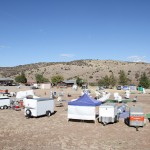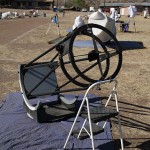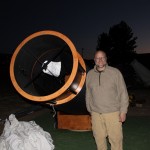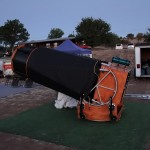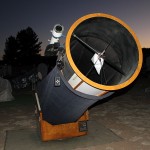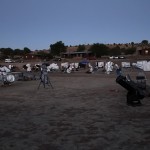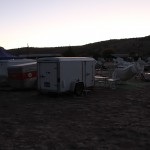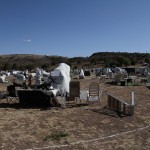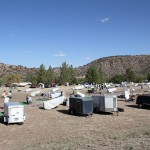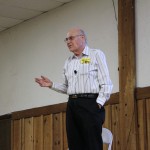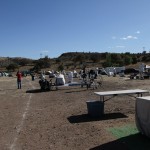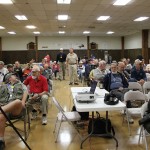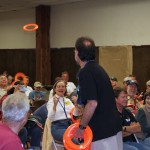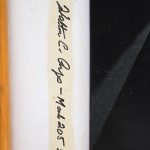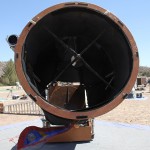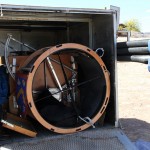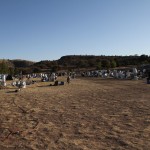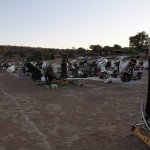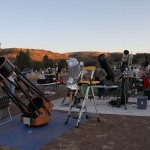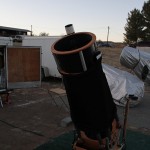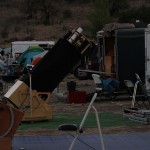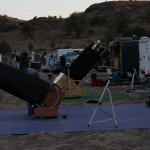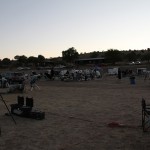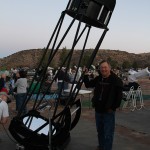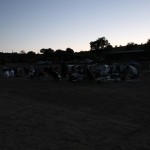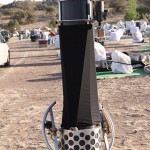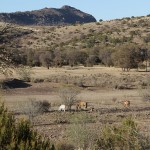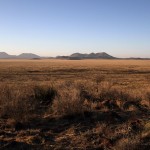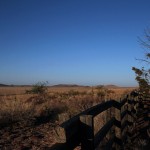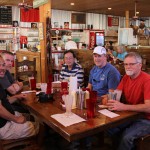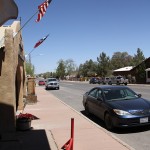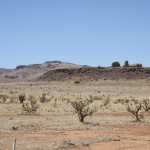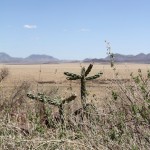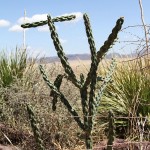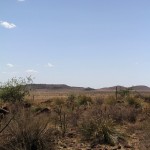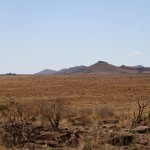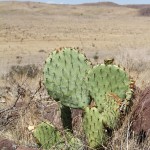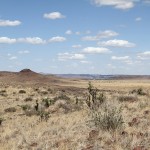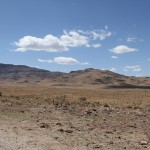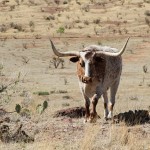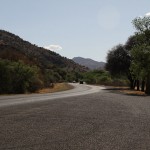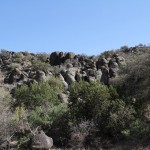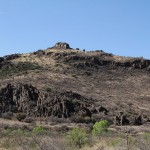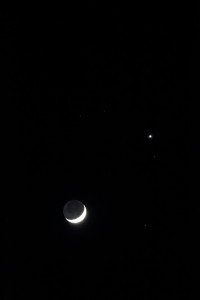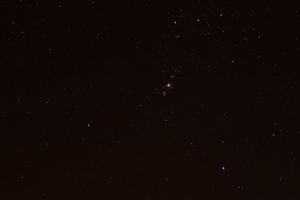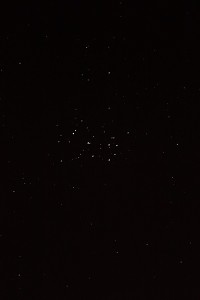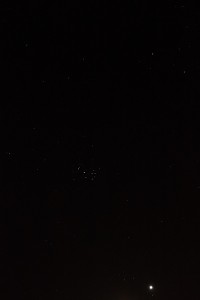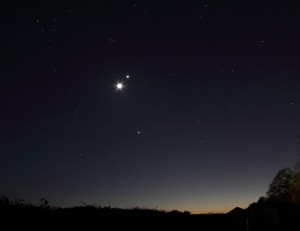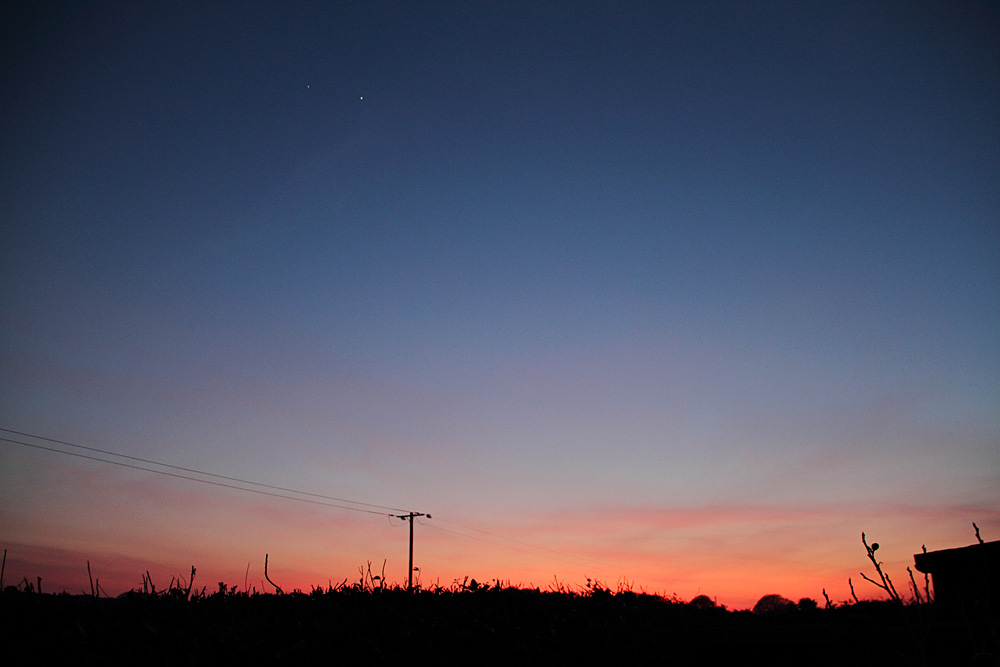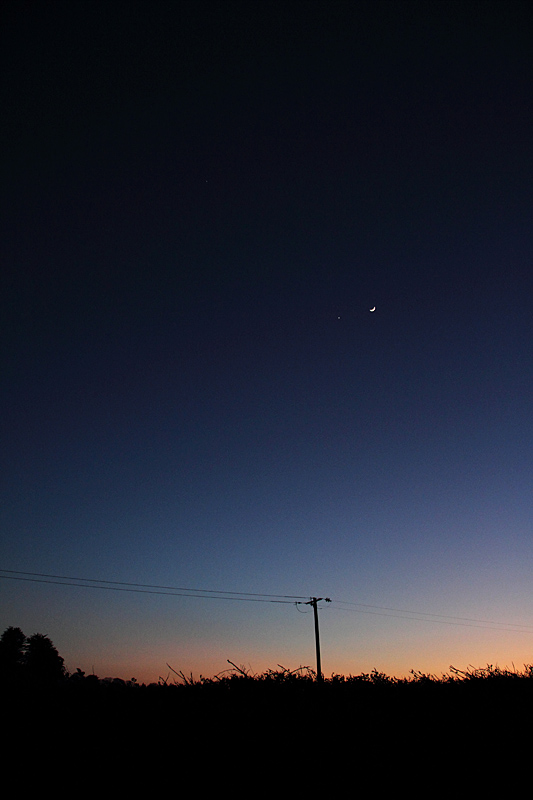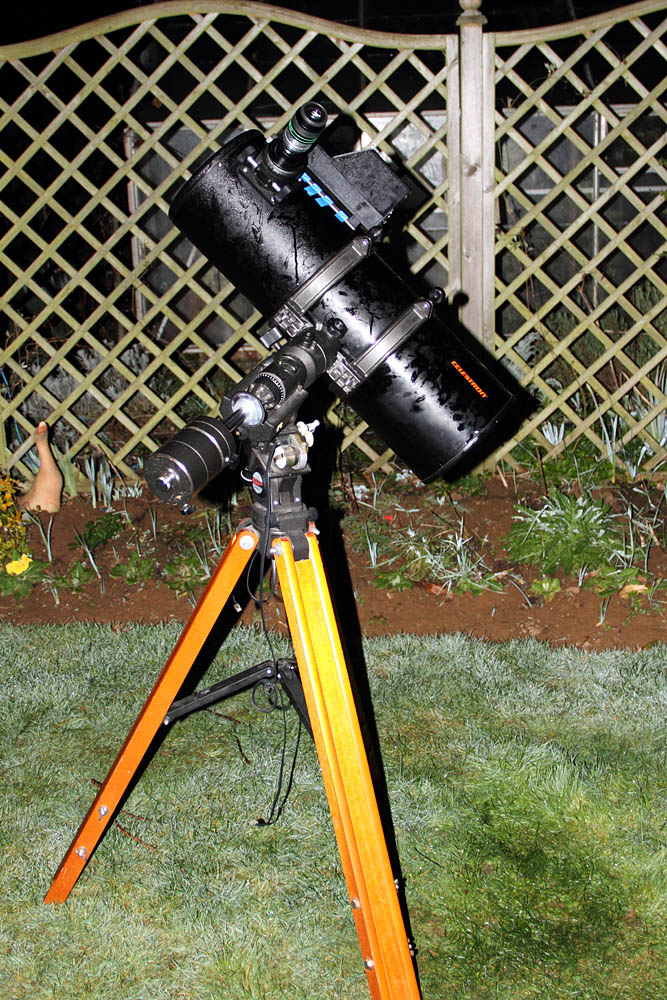I have uploaded part 1 of the write-up of the observing at TSP 2012. This covers the Monday and Tuesday nights. You can read it here.
TSP 2012 photos, part 2
Here are some more of the photos I took at the TSP this year
- The Upper Field
- A 20" dob its owner had entered in the ATM competition
- Dave Tosteson and his 32" dob
- Dave Tosteson's 32" dob
- Bill Christian's 25" dob
- The Upper Field at dawn, my borrowed 10" dob is at lower right
- Upper Field at dawn
- Upper Field
- Upper Field, looking south east
- Al Nagler talks to the assembled masses
- Cartoon
- The Upper Field
- The meeting room on Saturday night
- 'Crazy Bob' Summerfield dispenses Celestron frisbees
- Halton Arp's signature on Bill Christian's 25" dob
- Business end of Larry Mitchell's 36" Obsession
- Larry's 36" Obsession in its travel trailer
TSP 2012 photos, part 1
Here are some of the photos I took last week. I’ve included some photos of the general area, as well as the TSP itself.
- The Upper Field - note dust!
- Part of the Upper Field
- Barbara Wilson's 20 inch dob
- Upper field at dusk
- Jimi Lowrey with 'Black Betty', his 28" travel scope which won this year's ATM award
- Upper field at dusk
- Scott Ewart's 12" dob, built from a beer keg.
- The Wild West - Prude Ranch horses
- At the Ft. Davis Drug Store. Clockwise from left: Alvin Huey, Len Philpott, Darrell Lee, Dave (forget last name) and Robert Reeves
- Ft. Davis main road outside drug store
- Texas Longhorn bull
- The road between Ft. Davis and the Ranch
More to follow.
The other new TSP purchase
The other new item I bought at TSP was a 2″ Howie Glatter laser collimator, with Barlow attachment. I always try and buy new astro ‘stuff’ at TSP because buying stuff in the States is so much cheaper than here in ‘Rip-off Britain’ (Rip-off EU).
The Howie Glatter collimator has rave reviews and ensures perfect collimation each time. I may yet get a TuBlug to go with it, as I might not be bothered to remove the shroud every time but, for now, this’ll do the job in place of my old SkyWatcher, which will be kept for use with my 8″ scope which doesn’t accept 2″ fit equipment.
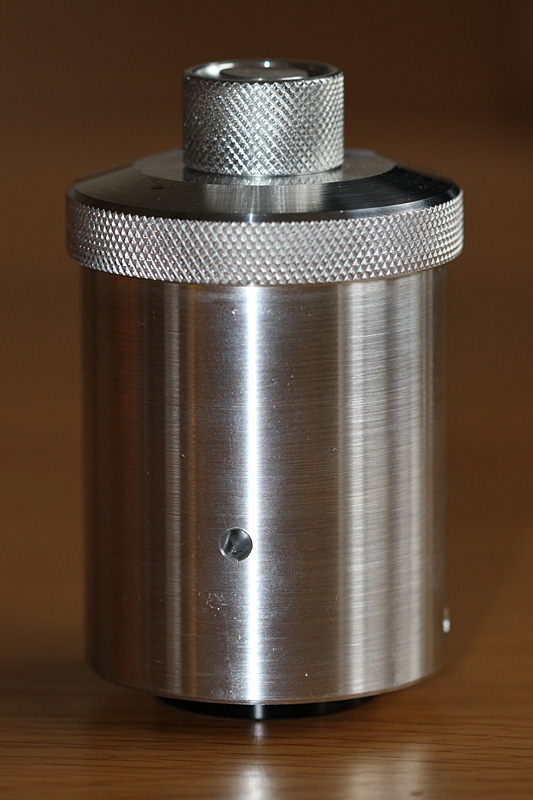
2" Howie Glatter laser collimator
Naglers
With people ditching their older eyepieces in favour of the newer Ethos and Delos eyepieces, there are bargains to be had. Quite a lot of Naglers are appearing for sale second hand. These haven’t become rubbish over night but, human nature being what it is, people want the newest and – to them – best. I got a couple of second-hand Naglers at TSP last week, a 9mm Type 1 and a 12mm Type 4. The 9mm belonged to my friend Jimi Lowrey, so it’s come from a good home. The 12mm I got from CCTS, of New York State.
I was planning to buy a 10mm and 6mm Delos but there were none to be had, all gone within a couple of days! However, there are 5 new Deloses coming out later in the year, so I might replace my 15mm Plossl with one of these unless I get another Nagler.
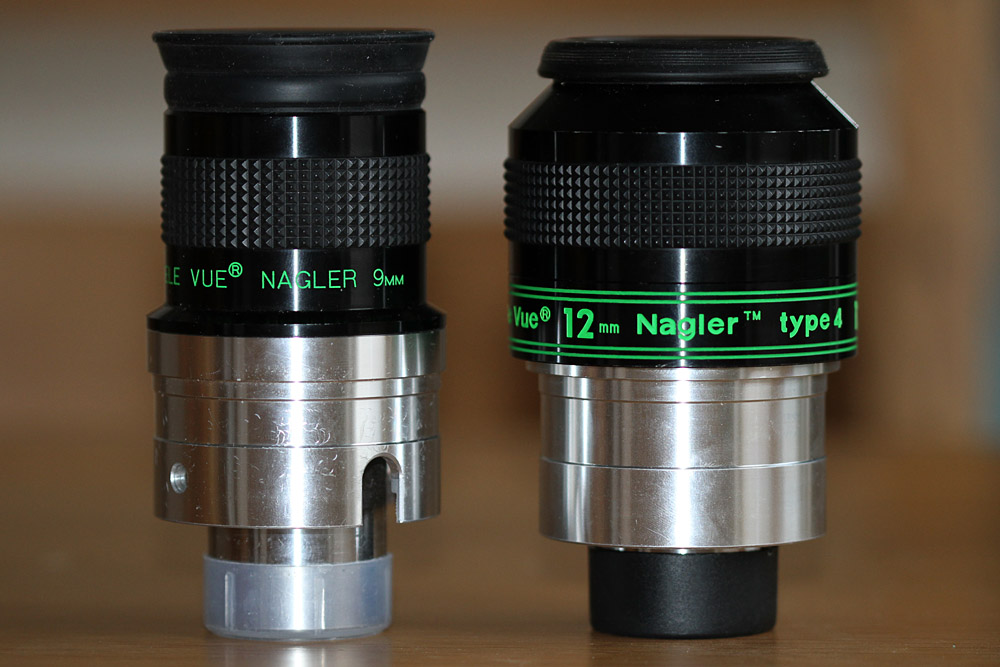
My Naglers: 9mm Type 1 (left) and 12mm Type 4 (right)
I met Al Nagler himself during TSP and he signed the box my 12mm came in.
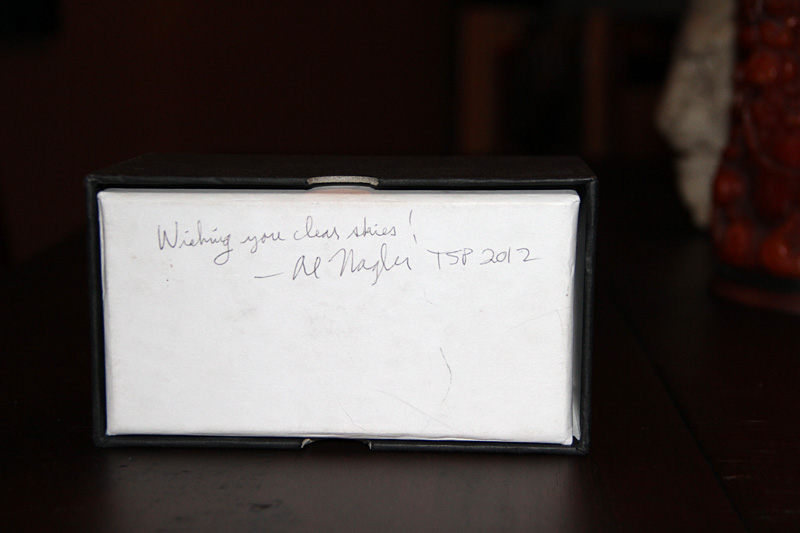
Al Nagler's signature on the 12mm box
I have plenty to post from my visit to TSP, which I will do over the weekend. Suffice to say it was the best TSP of the four I have attended with clear skies all week and, usually in the early hours after the crap has had time to settle, very transparent skies with NELMs of better than 7.0.
Some sky shots
I am not, and don’t intend to be, a serious imager. But I couldn’t resist popping off a few photos last Monday, with my Canon 7D and 18-135 EF-S and 70-200 f/4 L lenses.
Click on each photo for full-size.
Just two weeks to TSP and 1½ weeks until I head over to Texas …how time flies – I booked my flight six months ago and it doesn’t seem that long. I’m doing talks at San Antonio Astronomical Association and at TSP itself.
IoW Star Party
We got some reasonable observing in at the star party, despite poor transparency on Thursday and Friday nights. Sunday night was pretty transparent but hampered by a stiff breeze, which forced Owen Brazell to call it a night at 3am because his 22″ was moving around so much that it was impossible to observe and also becoming dangerous, both to observer and scope. I ended up dismantling mine totally and stowing it beside the chalets, out of the wind. Others, in more sheltered locations, continued for a while longer before also giving up for what was left of the night.
I didn’t get through as much of my lists as I would have liked, due mainly to the poor transparency and to Sunday night/Monday morning’s stiff breeze. I spent a lot of time in Leo, Virgo and even down in Crater and Corvus. I’m not going to post all the observations I made but, suffice to say, it was nearly all galaxies apart from NGC 4361, a planetary nebula in Corvus (and this was a second visit, I’d previously observed this in May 2008, with my 12″ Dob), NGC 5634, a globular cluster in Virgo, plus some eye candy in the form of the best views I have ever had of M42 (come on, it’d be rude not to!), Saturn, Mars and NGC 869/884 (the Double Cluster).
Thursday, 22nd March, was the day of arrival. I arrived late morning, and set up my scope once I’d stowed my other stuff in the chalet and parked the car. Other people were also arriving through the afternoon and the ‘serious visual observers’ area (as designated) soon began to fill with large Dobsonians plus some smaller fry, in the shape of a couple of SCTs and a few refractors.
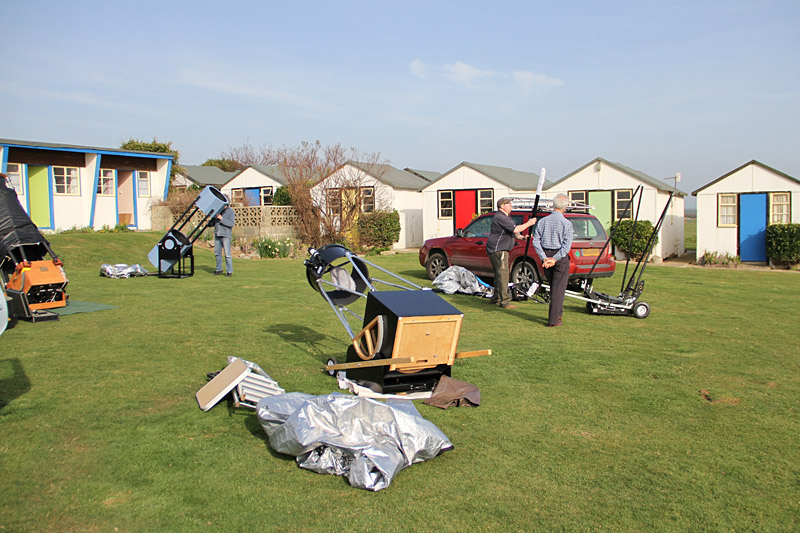
The visual area, with large Dobs. Mine, minus shroud, is in the foreground.
Thursday night was fairly cloudy, with a lot of high stuff, mist and generally poor transparency so I messed about for a while, looked at one of my favourite galaxies NGC 4565 and its neighbour NGC 4562, as well as NGC 4494 and some bright eye candy. I packed up at 2330 GMT and went to bed. Apparently it cleared a while later but as I was tired I wasn’t that unhappy about missing it. We did see an iridium flare earlier in the evening.
Friday was clearer but, as chairman, I had to go to the VAS meeting in Newport first but I managed to escape at half time because the sky looked promising. I got back to the observing field at around 9.45pm and set up. The transparency still wasn’t the greatest but I got my observing lists out and started hunting for galaxies in Leo before moving on to Virgo.
A lot of the session was spent in and around the Realm of the Galaxies in Virgo, as soon as it was high enough out of the crap in the atmosphere. Here, the 18″ really showed what it can do, especially given the fact it had more than 24 hours to cool down to ambient temperature, something it doesn’t always get to do at home. Galaxies were simply everywhere. Find one and you have found dozens, maybe even hundreds, including some faint little sprites not on my charts (these were evident on the Sunday night when the transparency had improved and the naked eye limiting magnitude was 6.4) and, what’s more, the brighter NGCs and the Messiers showed detail – this is what I bought the 18″ for! Simply put, I got totally blown away by these galaxies!
Saturday evening started off with an ‘eye-candy’ session. The eye candy included M42, which was simply stunning in the 18″, and several people commented on how good my telescope and mirror are which pleased me no end, of course, as it is nice to know your ‘investment’ is as good as the money it cost. It does need a few modifications and what I want to do is get a decent focuser for it (I’d originally ordered it with a bog-standard rack-and-pinion focuser, on grounds of cost, which does the job of course, but could be better) such as a Moonlite Crayford or a Starlite FeatherTouch, adjust my crappy shroud* (easily the one poor thing about the scope is that the shroud is rubbish) so it doesn’t blow about all over the place, plus waterproof it to prevent dew soaking through and dripping onto the mirror, and finally get round to adjusting the position of the Telrad base, which I’ve been meaning to do for ages** (I had a brain-fade when putting it on the scope and put it in the wrong place – it still worked, of course, but meant I needed to walk round the scope to look in the eyepiece). I’d also like to put some sort of light-absorbing material on the truss poles to reduce light scatter and improve contrast.
Most of the session was, again, looking for galaxies. I spent a good amount of time in Corvus and Crater, which meant bending down or kneeling on the ground to look through the eyepiece – it therefore wasn’t surprising when I had severe knee pains and back ache for three days afterwards, but at least I managed to cross a few of the objects off my observing lists.
Sunday was much clearer. After a very interesting visit to St Catherine’s Lighthouse in the afternoon, we spent the evening in the Crown pub at Shorwell, before returning to BHC and a stunning sunset.
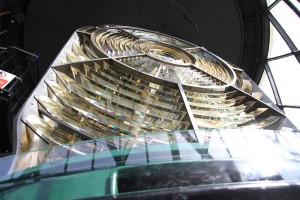
The lantern at St Catherine's Lighthouse
Although Sunday night into Monday morning was very transparent, a stiff breeze had arrived, which made observing difficult. I gave up by 3am, fearing my scope would blow over, so I dismantled it and moved it to a more sheltered location, with other people packing up shortly afterwards. As Monday was the day we all went our separate ways, I stowed a few things I didn’t need, such as the truss poles and a few other bits and pieces, in my car. I did, however, manage to observe some more galaxies in and around Virgo, as well as the globular cluster NGC 5634.
It was an excellent star party and I had a good time. This was the 5th IOWSP and the 4th I have attended (I missed 2011); in 2008 and 2009 I could only come for one evening and went home afterwards while in 2010 I came for two nights, camped and nearly died of hypothermia – I have never been so cold in all my life! This year, I was at the star party for all four nights, staying in a chalet, and it was so much nicer and I also felt more part of things.
Next year’s star party is in early March. Unfortunately I think it coincides with OzSky 2013 which I would like to go to, depending on finances.
* I have altered the shroud, using some velcro and I have attempted to waterproof it with some tent waterproofer I bought in Mountain Warehouse – this failed but I’ll get some better stuff from Goodyears in Sandown.
** I have now altered the Telrad position. Much better.
For all the photos from the star party, please click here.
Isle of Wight Star Party 2012
The 5th annual Isle of Wight Star Party was held between 22nd and 26th March 2012. I went to the 2008 and 2009 IOWSPs but drove to and from the event each of the couple of nights (not fun), I camped for two nights in 2010 and nearly froze to death (even less fun) and I missed 2011 due to having the flu (the real McCoy, not the poncy severe-cold-type) so, this time, I decided to go for the duration and do it properly, staying in the relative comfort of a chalet and also taking my 18″ Dob with me.
I’ll write about the observing in a separate post but, in the meantime, I’ll say it was a success. The only downside was the poor transparency on three nights and a stiff breeze on the fourth night, although we still got a lot of observing in. Here are a few photos to be going on with.
Everything fit into my big Renault MPV, with room to spare.
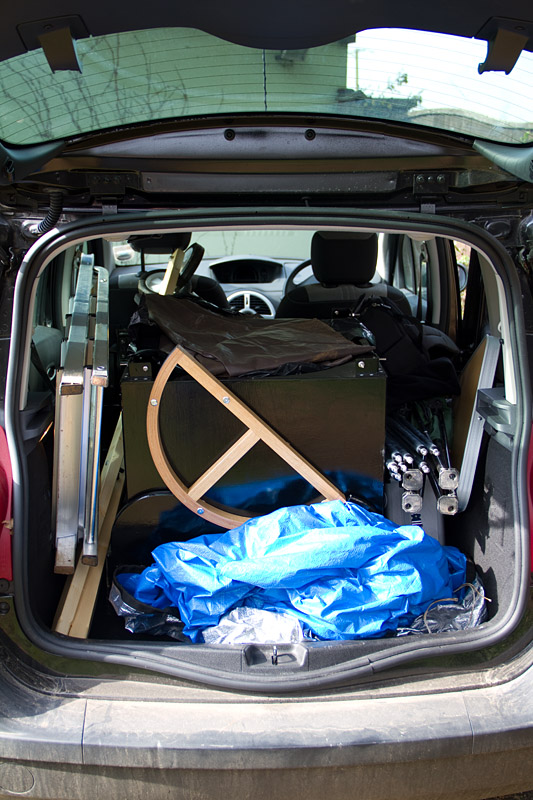
My scope, just after arrival.
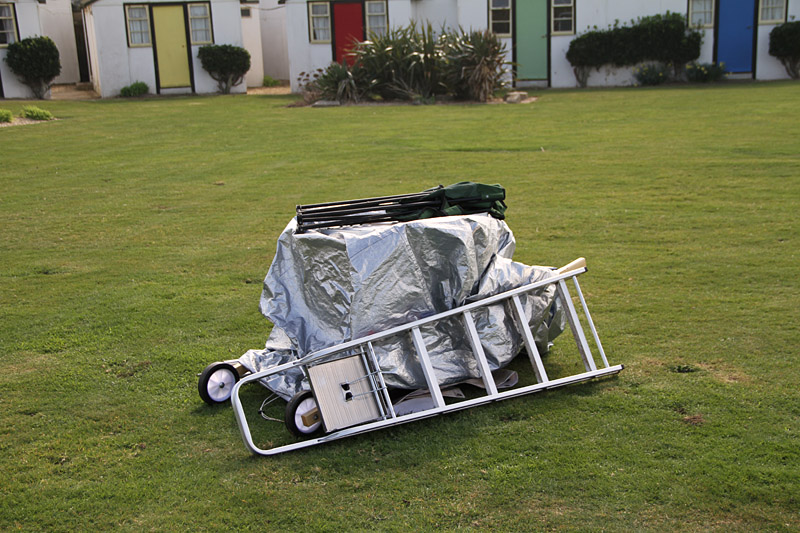
My friend Owen assembling his 22″ Obsession UC
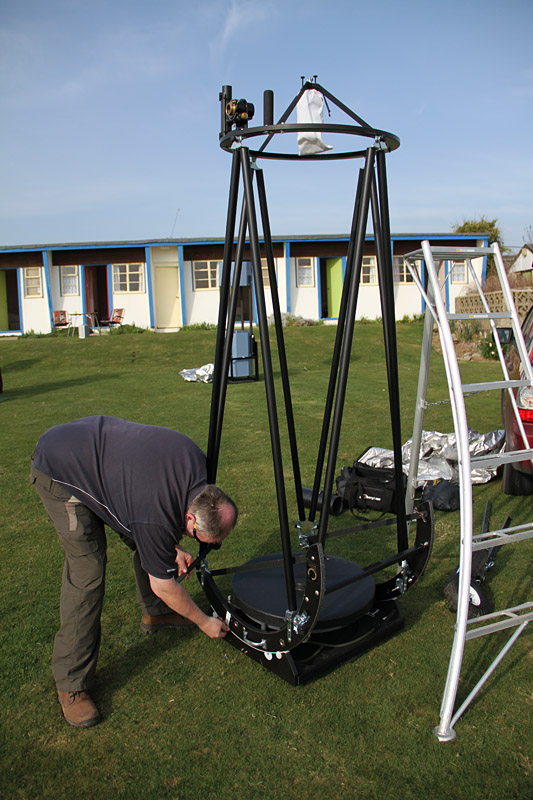
My 18″ scope fully assembled in the ‘Valley of the Dobs’, shroud billowing in the stiff breeze
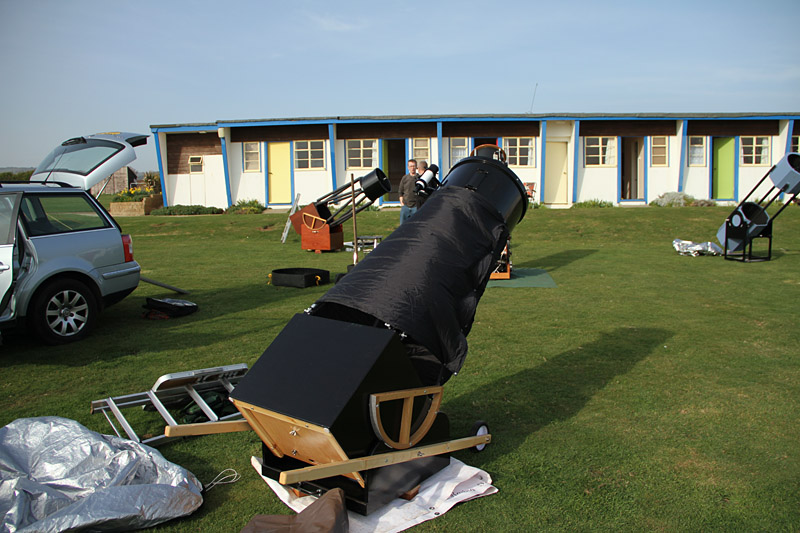
Another, older, 18″ David Lukehurst Dob.
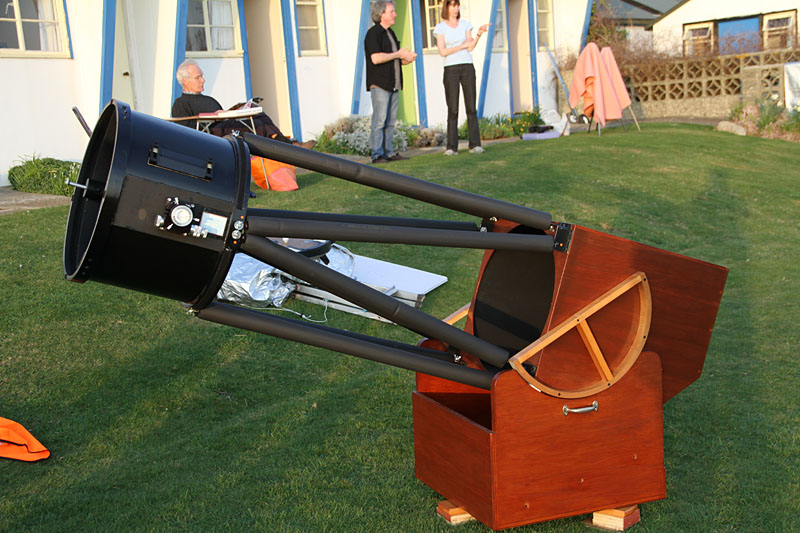
The ‘Valley of the Dobs’: From left to right – a 17.5″ home-made Dob, an 18″ Lukehurst Dob, an 18″ Obsession (in the process of being uncovered), a 22″ Obsession UC and my 18″ Dob (still under its cover).
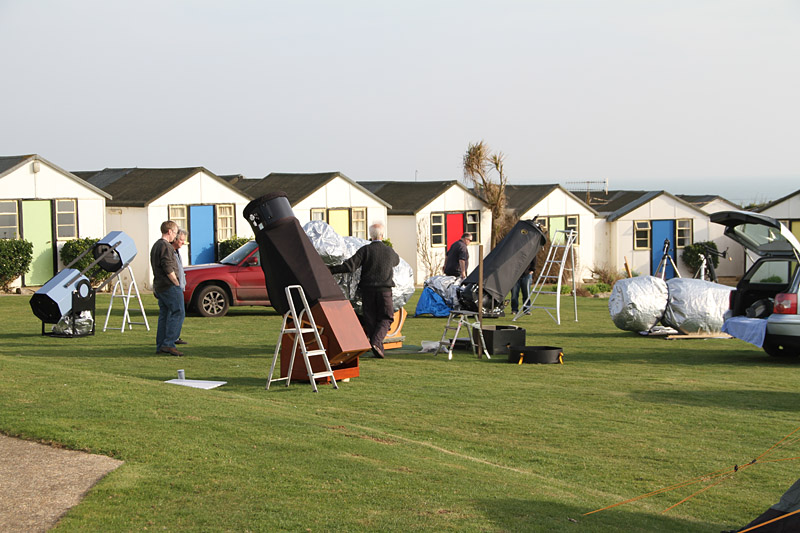
Sunset
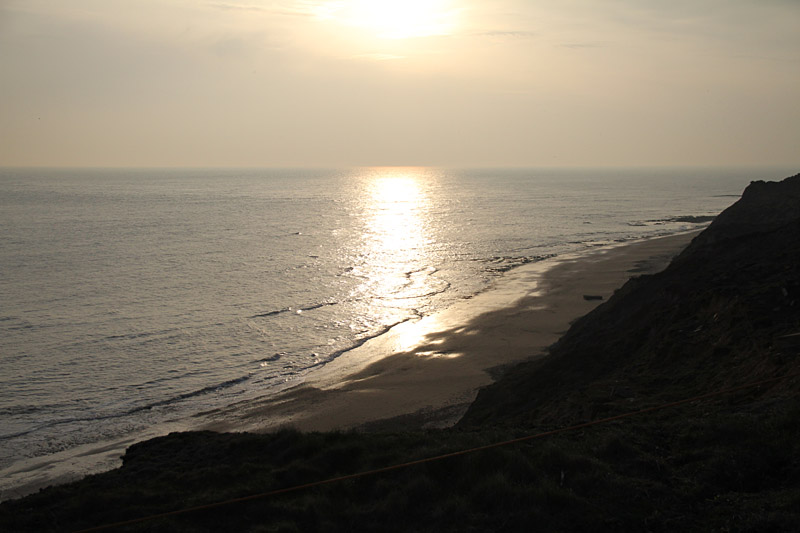
Just after sunset on the Sunday
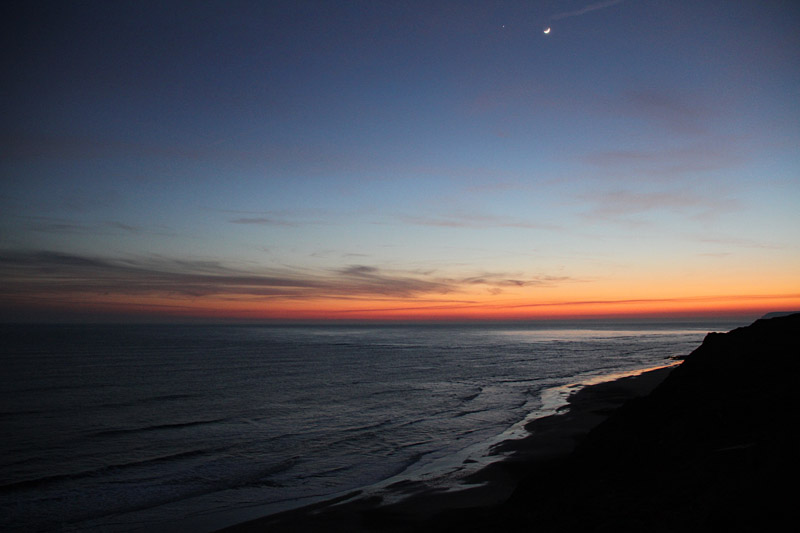
Canis Major and Orion, getting low in the west (a bit of light pollution, from Bournemouth, is evident in the west)
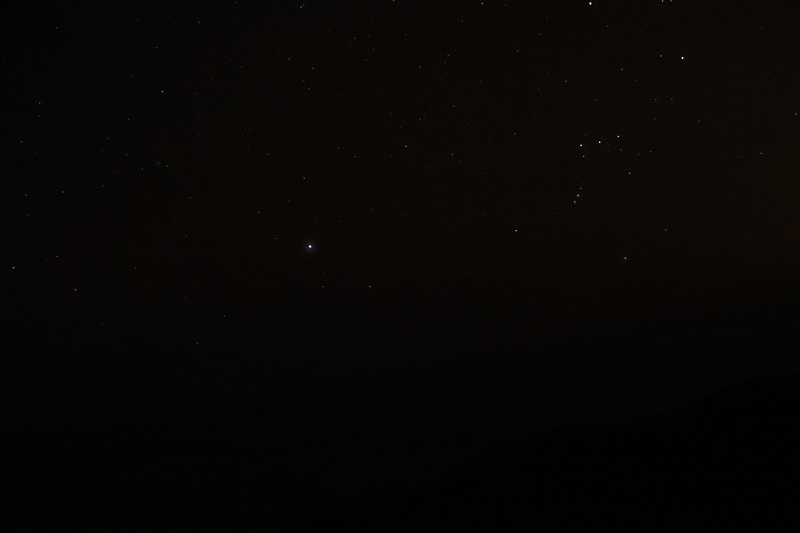
More to follow…
Jupiter and Venus meet
Observing, 25th February 2012
February has a reputation for being a disgusting, wet and horrible month, at least here in Britain. This February, however, has been markedly different so far, very spring-like (at least in the latter couple of weeks) and with some clear nights. Climate change? Maybe or, as likely, maybe not. Who cares, I hate cold and/or wet weather, so if it’s like this for evermore I’ll be happy!
25th February 2012
Conditions: Clear, chilly (2°C/35.6°F), very dewy (humidity was 85%), waxing crescent Moon.
Seeing: I-II
Transparency: III-IV (NELM not checked but I suspect it was not as good as 6)
Equipment: 8″ f/4 Newtonian on GEM (undriven), 22mm Televue Panoptic (36x), 8mm Televue Radian (100x)
I decided to have a session with my small 20cm (8 inch) Celestron Newtonian, simply because I’d felt sick all day and didn’t feel like going to the top of the garden and getting the big scope out (although, paradoxically, the 18 inch is easier to get out and use – wheel out of shed, collimate, stick eyepiece in and observe). I am not a massive fan of equatorial mounts but the small Newt can be fun to use, when it isn’t in one of *those* moods and being bloody awkward, and reminds me of my early days in astronomy 20 years ago.
The transparency was pretty dismal, so I stuck to open clusters in and around Monoceros.
NGC 2215, open cluster in Monoceros – Easily found at 36x. A detached, loose group of stars with an irregular shape. There are about 18 10-11th magnitude stars plus many more fainter ones in the background. No dark areas. 36x, 100x.
NGC 2324, open cluster in Monoceros – At 36x, this showed an irregular cross shape of brighter stars on a hazy background of fainter stars. The longer axis of the cross points south, where there is a roundish patch of just-resolved stars which gets larger with averted vision. At 100x, the patch is grainy and barely resolved. The stars are all white. 36x, 100x.
NGC 2252, open cluster in Monoceros – Lying just to the north of the Rosette Nebula this detached open cluster is easily found at 36x. It’s a largish, rich open cluster shaped like a rounded ‘Y’ or a wish bone, whose ‘arms’ spread to the SW and SE from the stem, which runs N-S. There are around 12 stars on a grainy background but 100x reveals more of them although many fainters ones stay unresolved. 36x, 100x
NGC 2251, open cluster in Monoceros – A fairly large irregular group of faint stars. A long chain of 11 stars stretches off to the south-east while a short line of 3 stars goes off to the north-west and on the west side is a semi-circle of 5 stars. The overall shape of the cluster reminds me of an ‘Aladdin’s lamp’. There is some nebulosity involved in the southern chain, which is visible even without filters. The cluster is elongated NW-SE. 36x, 100x
NGC 2331, open cluster in Gemini – A large and coast open cluster, made up of around 25 stars. Not bright. 36x.
NGC 2234, open cluster in Gemini – A large, loose cluster of about 30-40 stars. Listed as ‘non-existent’ but it is there… 36x
By this time, as the dew was making life awkward, I packed up. I have to confess that open clusters are not my favourite class of objects to observe; I much prefer galaxies, globular clusters and planetary/diffuse nebulae but it is nice to look at something different from time to time. Also, doing the Herschel 2500 means that I have to observe open clusters as, although most of the H2500 are galaxies, there are a good number of open clusters in there too.
—————————————————————————————————————————————————-
I am considering the possiblity of building a run-off roof observatory, depending on costs and other factors. I didn’t use the big scope this session but I am confined to the top of the garden when I use it, meaning I can’t get away from neighbours’ lights. Also, the proximity to a footpath (just a few feet away the other side of a hedge) means that, although it is extremely rare for anyone to be walking along it at night, I feel a little exposed, although the hedge is six feet high and fairly thick.
I put up a tarpaulin as a light screen each time I want to observe but this is, frankly, a pain to do and I have to remember to do it each and every time I want to observe. Not only that, it is noisy to erect and attracts attention so, if I can put up a roll-off roof observatory, adapted from an ordinary wooden garden shed, I can incorporate a light screen with the added bonus of not having to wheel my telescope outside each time, not that this is difficult. Also, while the plastic shed I currently use is great, it is not insulated and my stuff gets damp from condensation (I can see myself having to get the 18 inch mirror recoated in a couple of years). A more permanent wooden structure, which will be properly insulated, and on a concrete base, should prevent this. It’ll be a year or two before this happens, though, especially as I have a couple of foreign observing trips lined up.
